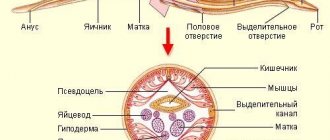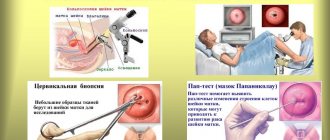What it is
Chronic dermatitis caused by allergies is called atopic dermatitis, and it is the most common. This type of dermatosis will be a hereditary type of non-contagious disease. The emerging disease is accompanied by a number of signs:
- Peeling of the skin;
- The appearance of skin rashes;
- Itching.
Atopic dermatitis is classified depending on the degree, severity and form of the disease.
Forms
This skin disease can take several forms, depending on the speed at which symptoms appear and how they are expressed determine the severity of the disease.
Acute
The appearance of this form occurs directly upon contact with the allergen and stops when it is interrupted. It differs from the others in that it appears suddenly and is accompanied by symptoms such as:
- Sudden appearance accompanied by severe scratching that does not stop at night;
- The patient's body temperature may increase slightly;
- The sinuses may become swollen;
- Tearfulness appears;
- The skin may become red and swollen;
- Rashes in the form of papules, etc.
The acute form of the disease is accompanied by stages such as redness, the appearance of vesicles, which later develop into erosion; crusts appear at the site of erosion, which then develops into peeling.
Subacute
The form of rash, which is called subacute, is accompanied by the following symptoms:
- The appearance of spots in the form of plaques, tinged red and covered with scales;
- The spots are peeling;
- Sometimes compactions, so-called nodules, appear at the spots.
Chronic
Chronic in this form the disease does not have pronounced symptoms, develops over a long period and manifests itself as:
- Skin redness;
- Light scratch;
- Peeling in areas of redness;
- In places where focal rashes appear, the skin thickens.
Development is accompanied by such stages as:
- Inflammation of the skin;
- The appearance of cracks on it;
- Crust formation.
Such forms as acute and subacute sometimes develop into chronic.
Localization
Localization, that is, the place in which something is located; in this case, these are the places of manifestation of rashes that occur with various types of disease.
| View | Location |
| Contact | concentrates mainly on areas with which the allergen has been in contact |
| Atopic | in this form, the foci of the disease will be located depending on the age of the patient |
| Seborrheic | located in those areas of the body where there are a large number of sebaceous glands |
| Allergic | with this form, the disease can appear on any area of the skin |
| Oral | localized around the mouth |
So, the location of the foci of the disease will directly depend on the type of dermatitis.
Detailed instructions for using neurodermatitis cream are discussed in our article. Find out more!
This material discusses in detail the instructions for use of Solipsor cream: indications and contraindications of the drug, features of administration.
How to treat psoriasis with warm and hot baths with celandine is presented in the material - celandine for psoriasis.
Manifestations
The manifestations of dermatitis are similar, regardless of the reasons that caused the inflammation. With focal dermatitis, signs are observed in one limited area of the skin. Main symptoms:
- Itching. The intensity of itching varies, from severe to mild;
- Redness. The affected area usually has unclear boundaries.
- Edema. The affected area may be slightly swollen.
- Rash. The nature of the rash depends on the type of dermatitis. These may be small nodules, papules or blisters filled with fluid.
- Peeling. With the dry type of dermatitis, the skin peels off in small or large scales.
- Exudation. Formation of compacted wet surfaces.
- Cracking. Cracks appear on the affected surface.
Types of dermatitis
The types of dermatitis in adults and children will be identical to those in children. There are such varieties as: allergic, contact, seborrheic, ear, oral, fungal, etc. Types of dermatitis are varied, some of them are more common than others.
Atopic
Dermatitis of this type is a chronic disease, the cause of its manifestation is contact with an irritant. Atopic dermatitis in children is classified according to stage of development, form, course, distribution, and origin. The disease can often be hereditary. The main symptoms are:
- Itching, which can be very severe and does not stop, but intensifies at night;
- The appearance of rashes;
- The skin becomes dry and flaky.
The manifestation of symptoms may depend on age, gender, season, etc.
Contact
ACD or atopic contact dermatitis is an inflammatory process that occurs on the patient’s skin; a similar reaction occurs after contact with an allergen. In the presence of this type of disease, the following symptoms are diagnosed:
- Swelling;
- Severe hyperemia, when the vessels at the site of contact with the irritant become overfilled with blood;
- Rashes in the form of small vesicles and papules;
- The spots that appear may become wet and covered with scales and crusts;
- Areas covered with necrosis appear.
This species differs from the others in that it does not have an incubation period, but strikes immediately after direct contact.
Allergic
This type of dermatitis appears when the body reacts to a specific irritant. These may be certain products, medications, etc. characterized by the following features:
- Large spots with a characteristic red color appear on the skin;
- Redness is accompanied by the appearance of small blisters;
- When they burst, they form wounds that become wet;
- All this is accompanied by strong scratching;
- Reactions such as sneezing, tearing, etc. are also possible.
The appearance of such rashes is possible on any part of the body.
Seborrheic
Dermatitis of this type can occur as a result of severe stress due to disruption of the endocrine or immune system. Signs of such clogging are:
- Red spots with pronounced boundaries;
- The capillaries in the affected area become heavily filled with blood;
- The groin and behind the ears become wet;
- Cracks and crusts appear;
- The affected areas itch.
Seborrheic dermatitis appears in places where there are sebaceous glands, head, face, etc.
Oral
A rare type of oral dermatitis, it occurs when the functioning of the immune system decreases, hormonal imbalances, or a malfunction of the nervous system or gastrointestinal tract. Symptoms:
- Dryness and retraction of the skin localized around the oral cavity;
- Subsequently, small pimples appear filled with transparent contents;
- Later they become purulent;
- The affected areas are covered with scales.
This type of disease develops rapidly and most often affects young women.
Treatment of contact dermatitis
If simple contact dermatitis develops, the first step is to identify and eliminate the irritant and, if necessary, use gloves and protective clothing. Before starting therapy, the skin must be thoroughly cleansed and washed.
Patients with allergic contact dermatitis often do not require treatment, since all painful manifestations disappear after eliminating the allergen. However, if necessary, potent hormonal fluoride creams and ointments can be prescribed
In cases where skin rashes are localized on the face or genitals, internal administration of glucocorticoids may be recommended for 2-3 weeks.
In order to improve the penetration of drugs, the application of occlusive (hermetic) dressings that block air access is indicated. During this period, the use of ointments with anesthetics is not recommended, as they are sensitizers and can increase irritation. However, local antihistamines can worsen the course of the disease.
When a secondary infection occurs, patients are given systemic antibacterial therapy, and hormonal ointments are simultaneously prescribed. For severe allergic contact dermatitis, salt or water lotions are applied to the affected areas. For severe itching, use ice or cold water.
In the acute stage of severe contact allergic dermatitis, systemic glucocorticosteroids are used.
Post-traumatic eczema
Post-traumatic eczema is one of the rare and most difficult to treat types of dermatitis. The appearance of this type is most often caused by injuries or other damage to the skin, which has a long healing period. Post-traumatic eczema is divided into three forms depending on the type of formation:
- The appearance of formations at the site of amputation of a particular limb;
- The disease develops at the site of injury after several weeks;
- Lesions appear at the sites of formed scars or tumor lesions.
This form of the disease is caused by microbes and should be treated under the guidance of a qualified specialist. The symptoms that appear in this type of dermatitis differ little from the symptoms of other types of eczema:
- The course of the disease is accompanied by itching;
- The affected areas become red and swollen;
- Rashes in the form of blisters filled with clear liquid, and sometimes pus;
- A crust forms at the sites where the bubbles open.
Eczematous lesions can form not only after a violation of the integrity of the skin, but also from a disruption of the nervous system. An important factor is the hereditary predisposition on which the course of the disease itself will depend.
Fish oil for psoriasis - instructions for use are presented in this material.
Can psoriasis be smeared or burned with vinegar? Discussed in detail in the publication - treatment of psoriasis with vinegar.
Exudative ear dermatitis can be cured with lotions made from herbal infusions. Read more here https://psoriazweb.ru/dermatity/ushnoj-dermatit-u-ljudej-lechenie.html
Prevention of atopic dermatitis
- Primary prevention of AD is to prevent sensitization of the child, especially in families where there is a hereditary predisposition to allergic diseases
- Secondary prevention is based on preventing the manifestation of the disease and/or its exacerbations in a sensitized child. The higher the risk of atopy in a child, the more stringent elimination measures should be.
- Prevention of AD also consists of adequate treatment of children with initial manifestations of the disease.
Diaper uniform for infants
Infants are also susceptible to dermatitis; it can be caused by bacterial or fungal infections, lack of child hygiene, excessive sweating of the baby, transfer of the child from breastfeeding to artificial feeding, etc. Symptoms of this type of dermatitis will be:
- In places of contact with an irritant, for example, with a diaper, redness appears; it may be faint and not bother the baby;
- With more pronounced redness, the affected areas may be very itchy, which will greatly bother the child both day and night;
- The rash may be in the form of blisters;
- After opening, ulcers form in their place and eventually become crusty.
The development of the disease occurs quite rapidly, and with repeated infection, pustules may appear.
Diagnostic methods
The latest methods for diagnosing the disease
To accurately diagnose a disease that occurs at any age, you need to seek help from a specialist. Determining the disease itself is a simple procedure; based on the symptoms and location of the rash, you can determine its type. But in order to identify the true irritants that cause the disease, patients need to undergo a series of tests:
- You will need to take a general urine test;
- Blood, biochemical analysis reveals the amount of immunoglobulins contained in the blood;
- Examination of the secreted fluid from the formed foci of inflammation, thus revealing the presence of bacteria and fungi;
- The so-called fluid culture tank allows you to determine the patient’s response to various types of antibiotics in case they are needed;
- Immunogram - this type of study will allow you to assess the condition and performance of the immune system;
- When contact dermatitis is diagnosed, skin samples are tested.
These are not all studies that can be prescribed to a patient; the list depends on the stage and type of disease; in addition, ultrasound examinations (ultrasound) are sometimes prescribed.
Prevention
Prevention of dermatitis consists of strengthening the immune system, rational nutrition and compliance with sanitary and hygienic standards. For contact dermatitis, it is important to avoid interaction with a substance that provokes inflammation. If the allergen does get on the skin, you should immediately wash it off with plenty of water and apply Fenistil-gel to the area of contact.
You should try to avoid stressful situations; if you have a responsible event, during which it is difficult to avoid anxiety, you should start taking light sedatives in advance.
For chronic dermatitis, visiting dermatological resorts is recommended to prolong periods of remission. Therapeutic and preventive courses include treatment with mud, mineral waters and other useful procedures.
So, focal dermatitis is called, in which the inflammatory process covers a small limited area of the skin. The causes of this disease can be different, so you should not try to treat yourself, you need to consult a dermatologist and undergo a course of treatment prescribed by a specialist.
Treatment
Treatment of dermatitis depends on its type, stage and individual characteristics of the patient’s body. The drug complex is selected taking into account the tolerability of certain drugs. The fight against the disease is carried out using medications both externally and through ingestion. The main actions in the treatment of this disease will be:
- The main thing is to avoid contact with the object that caused the disease. This is possible after it has been established by passing tests, and sometimes by exclusion;
- If dermatosis is caused by fungi or infection, then first of all it is necessary to destroy the pathogens, as a rule, this happens by using medications internally, then they treat the skin;
- Affected skin areas can be treated with various antiseptics;
- Prescribed drugs are aimed at fighting inflammation and bacteria;
- If there is a rash on the skin in the form of blisters, it is possible to pierce them, but carefully without damaging the remaining one, as it is necessary for it to fall off on its own after drying. If there are no blisters, bandages with ointments are applied to the affected areas for a while; the required ointment and the duration of application of the bandages are determined by the attending doctor;
- If dermatitis is accompanied by weeping rashes, then bandages moistened with Burov's liquid are also applied to them;
- Drugs are prescribed internally to combat pathogens, as well as absorbents to remove them;
- To relieve itching, medications belonging to the antihistamine group are prescribed.
Due to the fact that the approach to each patient is individual, the list of actions may differ depending on the situation, type and degree of the disease.
Causes
Various reasons can cause an inflammatory skin reaction. Most often, this is:
- Hereditary tendency to allergies. If parents have experienced this disease, then their children are likely to also get sick.
- Low immunity. When the body's defenses are reduced, it is often the skin that reacts first.
- Presence of diseases. Sometimes the cause of dermatitis can be a chronic disease.
In addition, predisposing factors to the development of the disease are:
- nervous tension;
- contacts with aggressive substances;
- solar radiation;
- thermal effects;
- insect bites.
Diet features
One of the important points in the treatment of dermatitis is following a special diet; it is formed by excluding from the diet all foods that are potential allergens. Proper nutrition and eating hypoallergenic foods allows you to successfully recover from this unpleasant disease. The list of foods that need to be excluded from the diet includes:
- Protein-rich foods: fatty meats, chicken eggs, seafood, seafood, etc.
- Plant products: legumes, all red berries, tropical forest fruits, etc.
- Sweet carbonated drinks, drinking yoghurts containing any dyes, and caffeine-containing drinks should be excluded from the diet;
- Sweets such as honey, chocolate, caramel;
- Canned products containing any food additives and fillers for longer storage.
Products that are not pathological allergens include:
- Drinking in the form of black tea, green apple juice, herbal teas and infusions;
- Food containing protein: rabbit and sheep meat;
- Products of plant origin: green fruits, corn, buckwheat;
- Dairy products without additives, yoghurts, cottage cheese.
Products with low levels of allergens include:
- Protein foods - the meat of some fish, veal, as well as offal such as liver, tongue;
- Plant products: rice, pearl barley, green vegetables (zucchini, cucumbers, etc.), white berries such as white cherries, currants, etc.
- Sweets in the form of dried fruits from apples, pears, plums;
- Drinking fruits such as pears and apples (compote), green tea, mineral water.
Proper nutrition is not only the basis of treatment, but is also necessary for the prevention of dermatitis. A healthy lifestyle, eating foods containing large amounts of vitamins will not only avoid exacerbation of the disease, but also eliminate its occurrence altogether.
Folk remedies
In folk medicine, infusions, ointments, etc. are widely used. from various herbs to combat atopic dermatitis. Some of the most common and effective are:
- A plant called celandine, its juice must be applied to areas affected by eczema;
- No less effective is a series of infusions and various decoctions made from this plant and used both internally and externally;
- Periwinkle plant, it must be infused and can be added to water when taking baths, and also used in the form of compresses;
- Cornflower, a plant whose flowers can be used for oral administration by making an infusion from them;
- Veronica, a medicinal plant, is used dried, poured with boiling water and infused for several hours, then the affected areas are treated with the resulting infusion;
- For chronic dermatitis, an aggravation occurs in the spring, at this time you can use the buds of a birch tree. They are infused in water for several weeks, and the infusion is consumed by diluting it in a glass of water. This product is only suitable for adults as it contains alcohol;
- Leaves of the pear tree, only young leaves are collected, dried and then boiled, used in the form of lotions;
- Baths using oak bark and oatmeal are also widely used in the fight against dermatitis.
In addition to herbal infusions and decoctions, a product such as tar soap is also used; it is used when washing, helps improve blood circulation in the skin, dries out the affected areas, which helps relieve inflammation and further heal the skin.
Despite the fact that traditional methods can be very effective, you should still be careful and remember that the human body is very individual and individual intolerance to any plants is possible. Therefore, you should contact a more qualified specialist, this will help avoid complications of the disease.
Treatment approaches
Under the influence of an allergen, a whole cascade of inflammatory reactions is triggered in the body of atopics. As a result, a cellular infiltrate is formed at the site of inflammation, the basis of which is the cells of allergic inflammation. These cells secrete mediators, cytokines, and IgE. Even when the allergen is removed from the child’s environment, the inflammatory process continues. Inflammation is self-sustaining. This situation dictates the need for active anti-inflammatory therapy for all patients with AD. Since the cellular infiltrate, even with active anti-inflammatory therapy, cannot disappear within a few days, long-term basic anti-inflammatory therapy is necessary - at least 2-3 months until complete clinical remission is achieved.
Directions for AD therapy
- Diet therapy and environmental control measures
- Systemic pharmacotherapy antihistamines
- membrane stabilizing drugs
- calcineurin inhibitors [ source not specified 177 days
] - drugs for the treatment of diseases of the gastrointestinal tract
- vitamins
- immunomodulatory drugs
- drugs that regulate nervous system function
- preparations containing unsaturated fatty acids
- antibiotics
- systemic corticosteroids (for special indications)
Main goals of therapy
- Elimination or reduction of inflammatory changes and skin itching
- Restoring the structure and function of the skin (improving microcirculation and metabolism in lesions, normalizing skin moisture)
- Prevention of the development of severe forms of the disease, which lead to a decrease in the quality of life of patients and disability
- Treatment of concomitant diseases that aggravate the course of AD.
AD is based on allergic inflammation, so the basis of treatment is antiallergic and anti-inflammatory drugs.
The multiorgan nature of lesions in AD requires systemic basic therapy with antiallergic drugs. The disease has a chronic course - treatment must be staged and long-term.
Anti-inflammatory therapy for AD
Acute phase
- 2nd generation antihistamines (with additional antiallergic properties - antimediator and membrane stabilizing (loratadine)) - 4-6 weeks. (There is an exacerbation of this kind of drugs and various additives in these drugs).
- 1st generation antihistamines at night (if sedation is necessary) - 4-6 weeks. (There is an exacerbation of this kind of drugs and various additives in these drugs).
- Lotions (oak bark tinctures, 1% tannin solution, rivanol solution 1:1000, etc.), dyes (fucorcin, Castelani liquid, 1-2% methylene blue solution, etc.) - in the presence of exudation.
- External glucocorticosteroids (Mometasone cream, lotion) - 3-7 days and non-hormonal external agents that potentiate the effect of topical glucocorticosteroids (Reglisam gel).
- Systemic glucocorticosteroids (if there is no effect from the therapy).
Chronic phase
- Antihistamines of the 2nd generation - 3-4 months (exacerbation occurs with this kind of drugs and various additives in these drugs)
- External glucocorticosteroids (Mometasone ointment)
- Combined topical glucocorticosteroids based on Betamethasone, containing antibacterial and antifungal components, for example: triderm (Gentamycin + Betamethasone + Clotrimazole), diprogent (Gentamycin + Betamethasone), diprosalic (Betamethasone + Salicylic acid), etc.
- Immunosuppressive drugs (Tacrolimus), for example: Protopic - without the side effects of hormonal drugs)
- Preparations containing polyunsaturated fatty acids
Prevention of exacerbations
- 3rd generation antihistamines - 6 months or more. (There is an exacerbation of this kind of drugs and various additives in these drugs).
- Immunomodulators (individually).
- Specific allergen immunotherapy (SIT).
- External therapy and rational skin care (anti-inflammatory, keratoplasty and microcirculation-improving drugs, products with polyunsaturated fatty acids).
Experimental treatment with Nemolizumab
Nemolizumab, a humanized monoclonal antibody specific for interleukin-31, is being considered for the treatment of atopic dermatitis. The New England Journal of Medicine published results of a phase II clinical trial of Nemolizumab for the treatment of moderate to severe atopic dermatitis in 2020.[3] Over 12 weeks, 264 adult patients who had failed standard topical therapy received varying doses of Nemolizumab (0.1 mg; 0.5 mg; 2 mg/kg) or placebo. The intensity of itching was assessed using a visual analogue scale, and the area of the affected area was measured. The best results of therapy with this drug were observed in patients receiving a dose of 0.5 mg/kg. Among them, the reduction in itching intensity was 60 %
, in the placebo group -
21%
;
reduction in lesion area - 42%
, in the placebo group -
27%
.












